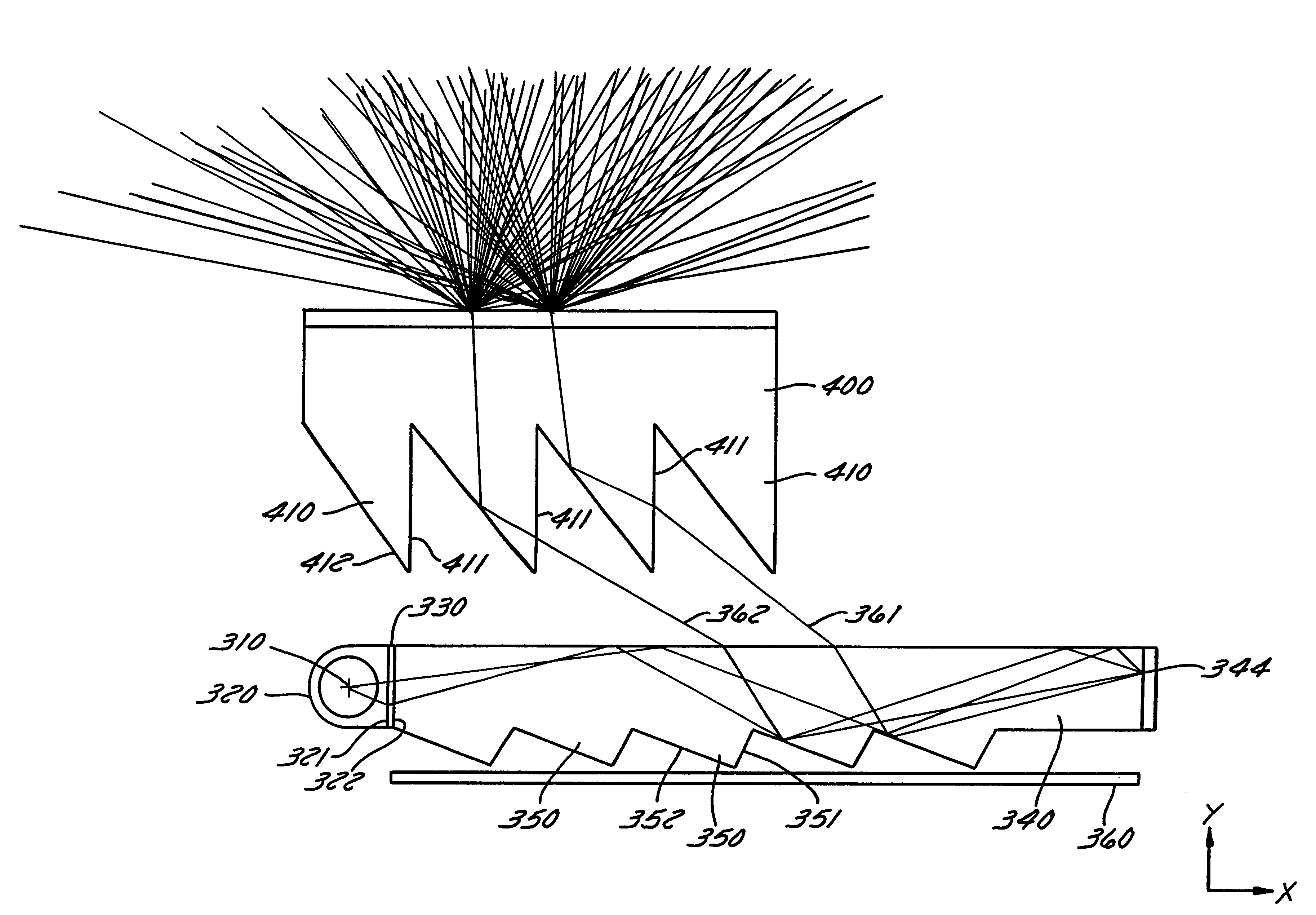Backlight for correcting diagonal line distortion
a backlight and diagonal line technology, applied in the field of backlight, can solve the problems of lack of ability to control the angle of light distribution, large waste of light energy produced by the backlighting system, and the lack of desired light energy intensity or brightness of the scattering backlighting system
- Summary
- Abstract
- Description
- Claims
- Application Information
AI Technical Summary
Benefits of technology
Problems solved by technology
Method used
Image
Examples
Embodiment Construction
Referring to FIGS. 1 and 3, light source 66 is located within the space defined by the reflector surface 68. The light source 66 can be a cold cathode fluorescent bulb, a hot cathode fluorescent bulb, or any other type of light source as previously described. Light from the light source 66 is directed toward the waveguide collimator 52.
The light source 66 can be more generally referred to as an illumination source. The waveguide collimator 52 includes incident end or light input end 54. The bottom surface 56 of the waveguide collimator 52 is provided with a first plurality of substantially parallel optical elements or facets 80. Each of the first plurality of substantially parallel optical elements 80 includes a first facet 82 and a second facet 84. The waveguide collimator 52 also includes the top surface 58 and the far end 62.
With regard to the examples shown, and other embodiments, light from the illumination source can be directly incident upon the incident end. This means that ...
PUM
 Login to View More
Login to View More Abstract
Description
Claims
Application Information
 Login to View More
Login to View More - R&D
- Intellectual Property
- Life Sciences
- Materials
- Tech Scout
- Unparalleled Data Quality
- Higher Quality Content
- 60% Fewer Hallucinations
Browse by: Latest US Patents, China's latest patents, Technical Efficacy Thesaurus, Application Domain, Technology Topic, Popular Technical Reports.
© 2025 PatSnap. All rights reserved.Legal|Privacy policy|Modern Slavery Act Transparency Statement|Sitemap|About US| Contact US: help@patsnap.com



